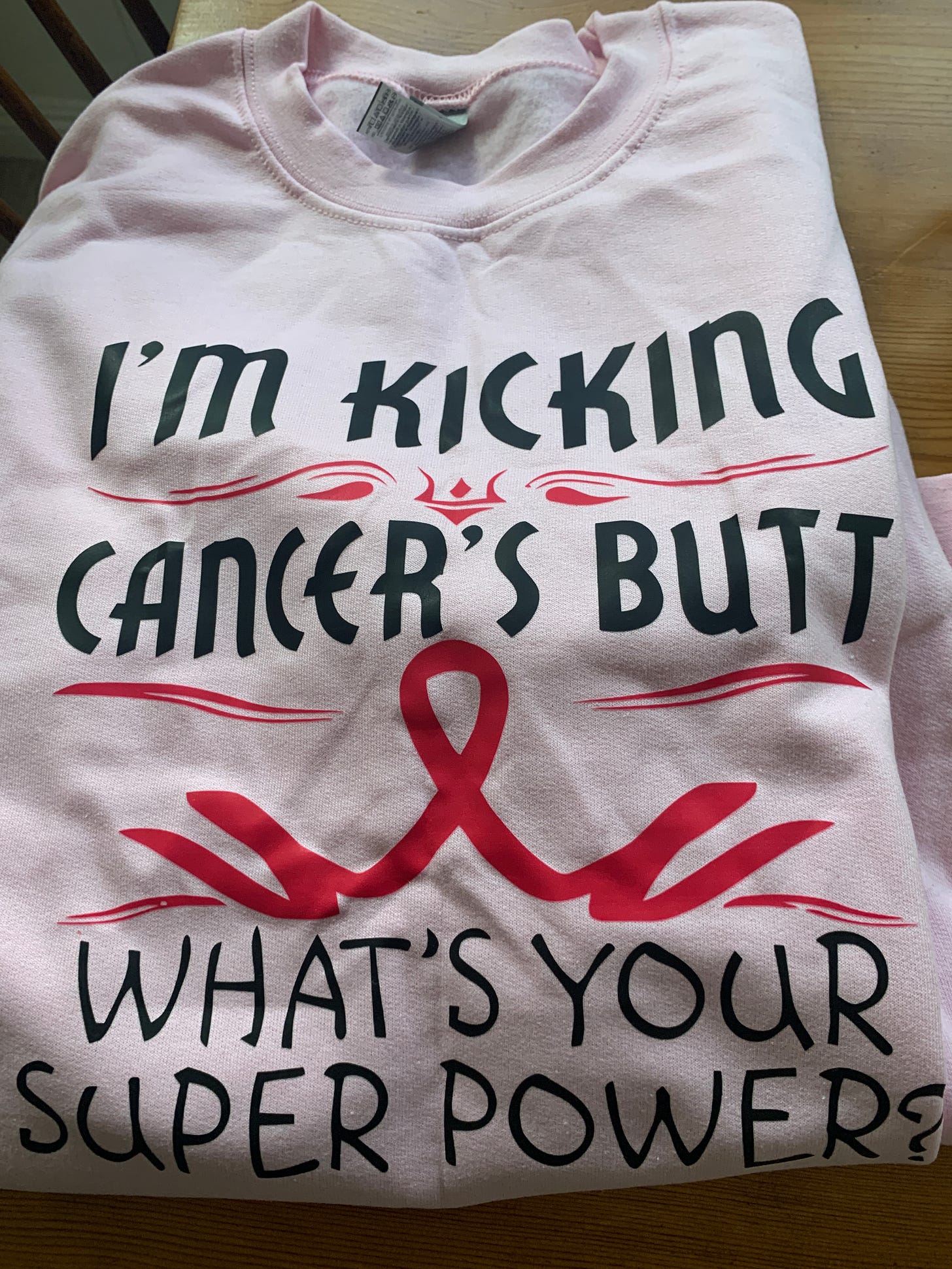Hi friends. It’s Rachel and this is Part 12 of my deep dive into the shallow waters of breast cancer. I am sharing these reflections from the past with the hope of being helpful to others. Please share at will. You will find all of my writing about cancer populated here in Substack: Stories From the Cancer Trail: A Breast Cancer Retrospective.
It seems like I’ve been writing about this cancer for a dozen months without us getting any closer to actually removing it from my body. But we’re almost there folks. Sharing this story requires that I be as thorough as I can. To leave nothing out. To fill in all the blanks. I would want that from you so you’re getting it from me.
On the day of my lumpectomy, I had to have one last procedure completed before the knives came out. It’s a long-winded term with a lot of letters involved. I’m not exactly sure how to pronounce it or if its inventors were trying to get a laugh out of hearing people try. I think that’s why the nurses simply call it “Lympho”.
Lymphoscintigraphy, also known by its less technical name, Sentinel Lymph Node Mapping, helps doctors identify which of the myriad of lymph nodes under my arm is the first one in the line leading away from my cancer. Sometimes there is just one when they are staged in a perfect row as if in line for the bathroom. Other times the lymph nodes are so closely connected together that the doctors determine more than one of them needs to be removed to ensure they have all the intel they need. Removing a lymph node is called a Sentinel Lymph Node Biopsy. Both of these lymph node processes are commonly done ahead of or during both a lumpectomy and a mastectomy.
The Lympho machine is in the basement of the hospital so I had a lovely tour of the hallways with a staff person wheeling me to my appointment. It was a lengthy trip from where I began so I was offered an up-close and personal introduction into the dynamics of a healthcare facility as a workplace. All it took was for me to ask “So this is a nice place to work, yeah?” for me to learn all of the things a Union Steward would usually be privy to. I just have one of those faces. Tell me anything and I’ll listen.
I arrived in the basement, laid on the hard table, and was given two injections of blue radioactive dye near the location of the cancer. In order for the dye to begin its trek toward my lymph nodes, I had to wave my arm up and down to encourage it to flow. It could take anywhere from five minutes to an hour for the dye to reach my first lymph node because not every road leading to lymph nodes is created equally.
Once the dye reached its destination, they pushed me into a fairly cold panini maker to capture images of the dye’s trail. The doctor used a black Sharpie to put an X on my skin where the surgeon would find what they all believe to be my first (sentinel) lymph node. Once I was pulled out of the machine, the doctor had a magic wand similar to the Savi Scout wand that she ran across my skin until it beeped. That beep was an additional confirmation that the X and the beep were in the exact same location.
Having blue radioactive dye running through my insides made me wonder exactly how it intended to leave my body, if at all. Do kidneys filter it out? Do we get rid of that kind of contaminant through our waste stream? Does our skin turn blue like Papa Smurf, the guy who poisoned himself with colloidal silver supplements? The answer is yes, yes and yes. All of that happens. And while of all my skin was not blue after this procedure, for days, one part of my body definitely was. A bright, majestic shade of turquoise, to be exact. X marks the spot.
The next essay of Stories from the Cancer Trail, a Breast Cancer Retrospective, we officially go under the knife to finally evict the Rat Bastard. Stay tuned…







Hi Rachel, lovely writing your journey has been very entertaining and informative. Hope all that stinking rats were exterminated. Nalani
Yikes, blue skin!